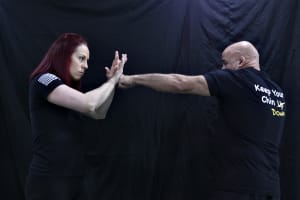
Being aware of what is going on around you is the number one skill of self protection. This skill is called situational awareness. I like to describe it as establishing your baseline. What does the world around you look like on a daily basis? It’s not looking for trouble, it’s noticing your surroundings on a day to day basis and using that information to influence your decisions. Once you know what your world should look like, when something changes, you can identify it right away. We practice this in our daily lives all the time! If we run a business, we look at key performance indicators to see how daily operations are running. When a change is identified, for good or bad, we adjust. When we know our normal, we can see when our normal is different, and adjust. This is situational awareness in its simplest form. The stakes can be high when using situational awareness as the first line of self protection. We have to be confident in our ability to decide to act on what we have observed. If we are only aware without action, we have not done enough to protect ourselves. We need to be able to act on what we identify as a change to our baseline. I use situational awareness for my personal safety all the time. For example, I was at a local deli picking up lunch for my family. I was standing in line waiting to pay for my sandwiches when another patron came in, opened the refrigerator case that held single beer bottles, grabbed a beer, opened it, snapped the cap across the room, and began to drink it. This behavior didn’t fit into my baseline at all! I looked around and it appeared as if no one else cared. Am I wrong for feeling like this situation could escalate into a problem? Am I being paranoid? It’s normal to second guess your gut, but at the end of the day, your gut is a powerful tool that is really only looking out for you. I decided to listen to my gut, and if I was wrong, I would take the steps to rectify any wrongs. I simply turned sideways. Yup, that’s it. Instead of standing in line facing the cashier with my back to the beer drinking patron, I turned to be able to see more of my surroundings. With a simple change of standing angle I was able to keep an eye on my spot in line, monitor the abnormal behavior by the beer refrigerator cases, and find my closest exit in case the baseline deteriorated further. I had decided not to stay if things got worse. My fancy self defense move would be to get out of there and get help if needed. I would not be trying out my Krav Maga defenses today. I took my exit planning a few steps further while I was waiting to pay and leave. Since my plan was to exit quickly if events escalated, I needed to figure out which exit would work best. I also need to identify things that could inhibit my exit such as people, display racks, spilled liquid on the floor, etc. While my brain was checking the list of obstacles to my exit, I also made a list of things I could use to secure my exit. Funny, they were the same thing. Could I put people between myself and the danger? Could I use the rack display to create distance between myself and the danger? Could I spill liquid on the floor as I left to slow the danger from following me? Observing your environment will give you a list or items that you can use to help or hurt your chosen defense method. Luckily, I was just able to use this as a mental exercise to prepare my mind for self protection. The patron sat at a table and drank their beer. I paid for my sandwiches, and left safely through the door without any need for rank displays or liquid spills on the floor. If you are interested in understanding how to defend yourself, thinking through these scenarios is an important first step. Preparing yourself to problem solve through a difficult situation may not be your go to mental exercise. No worries! We are here to help! Plus, you can meet a cool community of people looking to learn self defense and relieve some of life’s stress with awesome striking combinations, ground fighting, and self defense techniques. Check us out!


